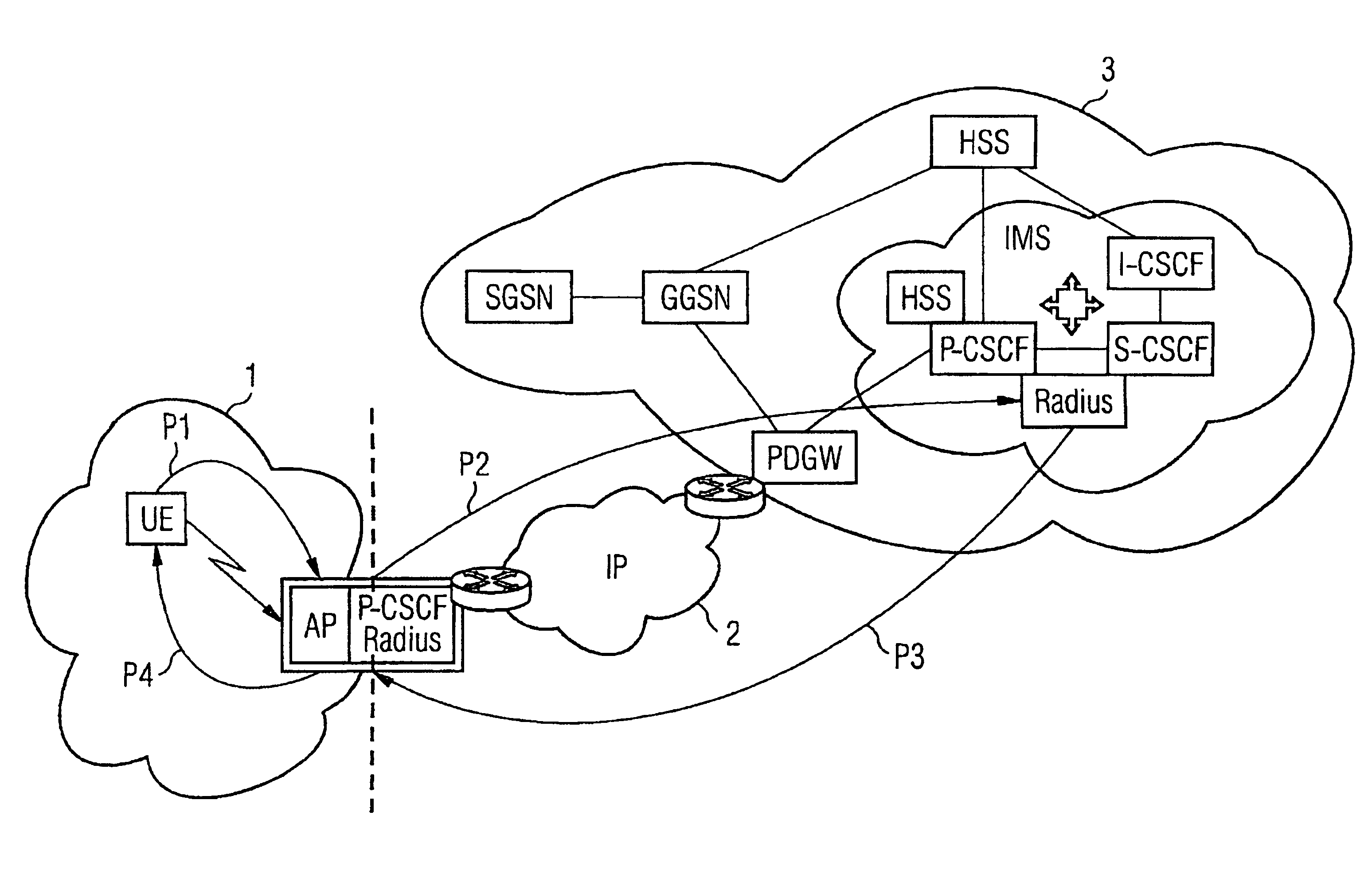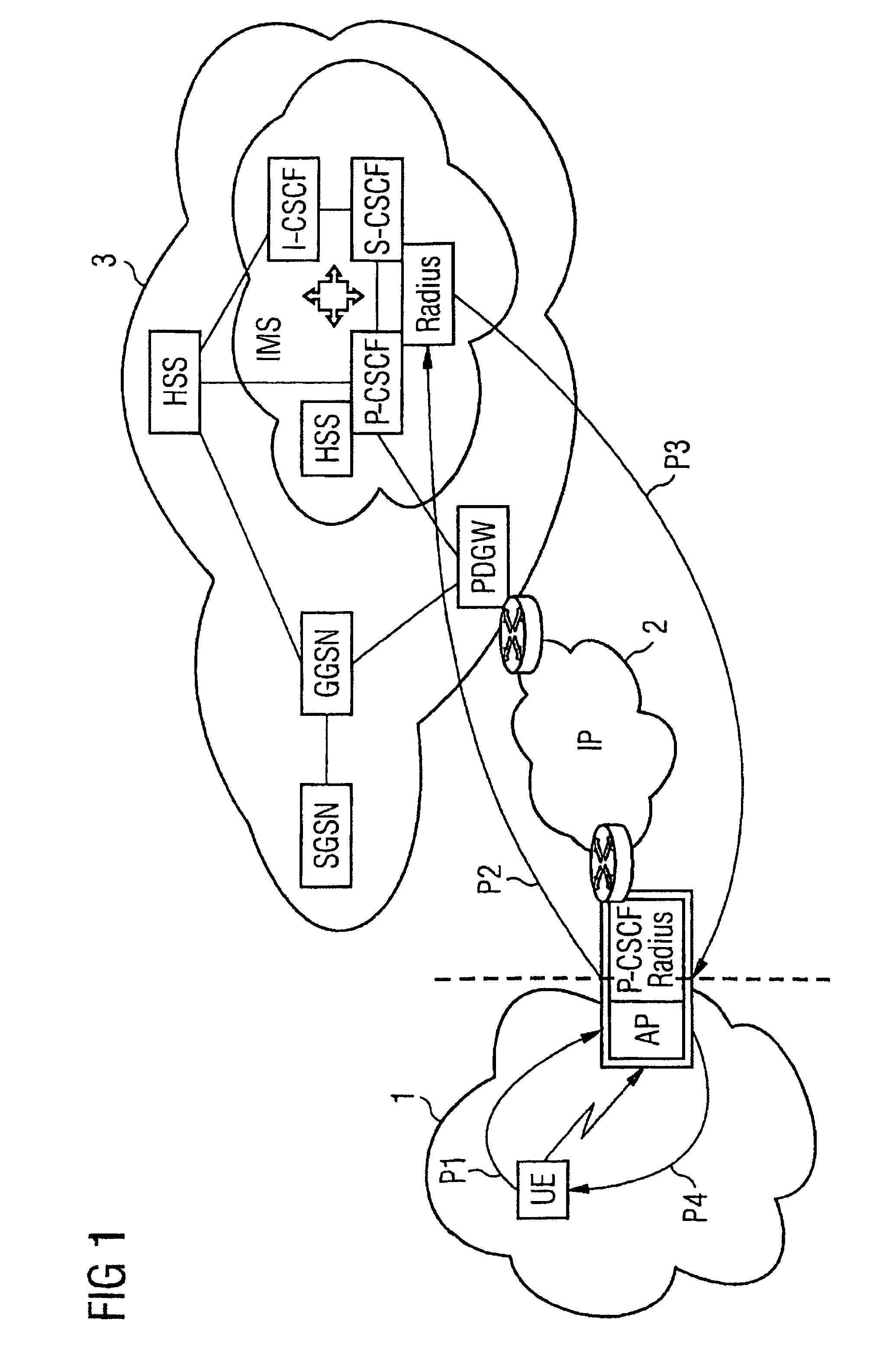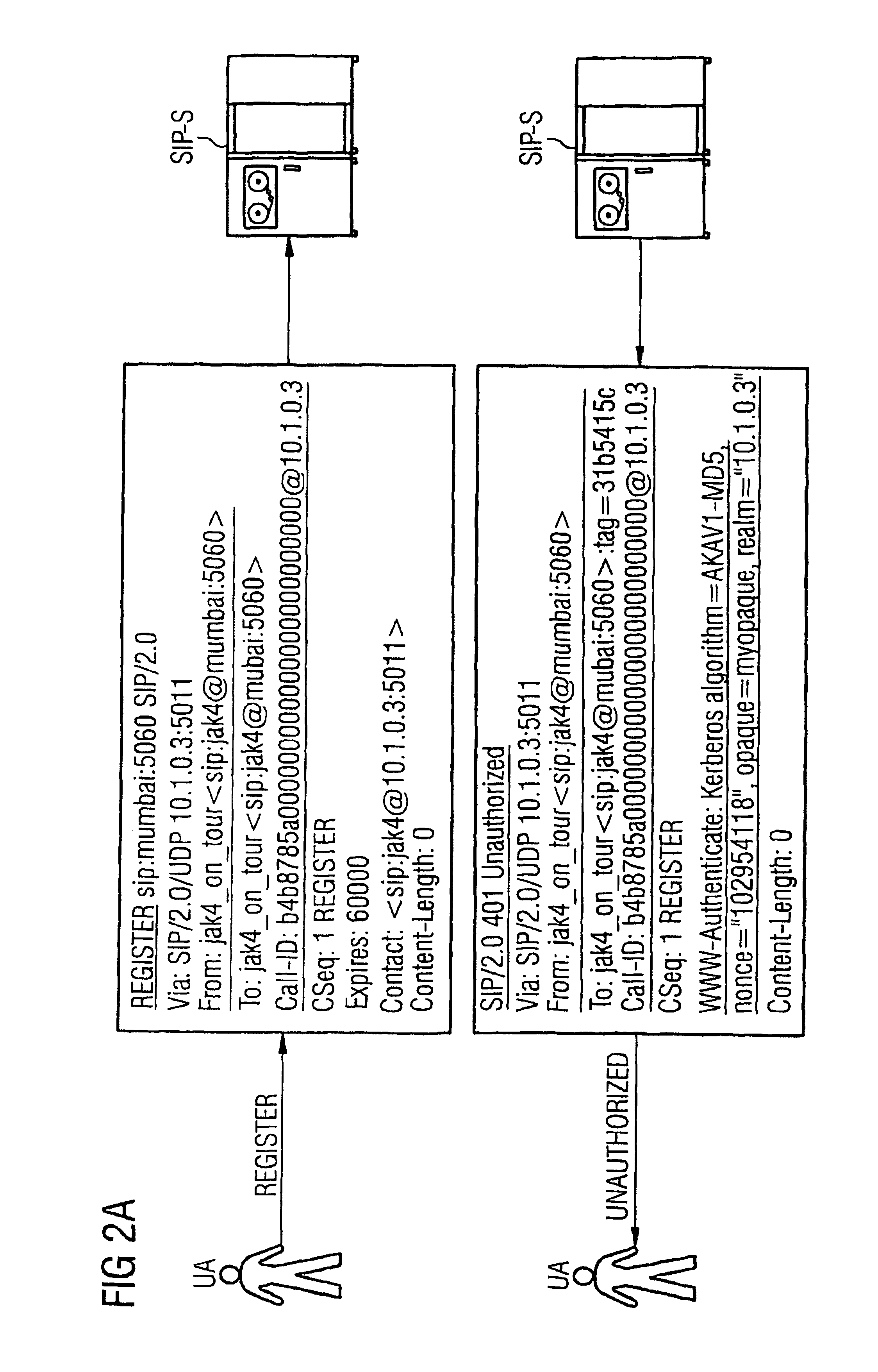Method for transmitting data in a WLAN network
a data network and data technology, applied in data switching networks, wireless commuication services, eavesdropping prevention circuits, etc., can solve the problem of not being able to further authenticate above and beyond the access node in other data networks
- Summary
- Abstract
- Description
- Claims
- Application Information
AI Technical Summary
Benefits of technology
Problems solved by technology
Method used
Image
Examples
Embodiment Construction
[0028]The data network represented schematically in FIG. 1 comprises a WLAN network 1, an IP network 2 and a 3GPP network 3. A user terminal device UE (User Equipment), which can be, for example, a mobile radio device or a laptop is wirelessly connected (as indicated by the zigzag arrow) to an access node AP (AP=Access Point) of the WLAN network. The access point AP is in turn connected to a Proxy CSCF server P-CSCF and a RADIUS server Radius. Proxy CSCF servers are already well known from the prior art and are used for processing SIP / SDP messages. Similarly, RADIUS servers are well known from the prior art, said servers being able to process messages of the RADIUS protocol.
[0029]The IP network 2 is connected to the access node AP or, as the case may be, to the P-CSCF / RADIUS servers. Said IP network is in turn connected to the 3GPP network 3. As well as a further RADIUS and P-CSCF server, the 3GPP network comprises a plurality of components with the designations SGSN, GGSN, HSS, IMS...
PUM
 Login to View More
Login to View More Abstract
Description
Claims
Application Information
 Login to View More
Login to View More - R&D
- Intellectual Property
- Life Sciences
- Materials
- Tech Scout
- Unparalleled Data Quality
- Higher Quality Content
- 60% Fewer Hallucinations
Browse by: Latest US Patents, China's latest patents, Technical Efficacy Thesaurus, Application Domain, Technology Topic, Popular Technical Reports.
© 2025 PatSnap. All rights reserved.Legal|Privacy policy|Modern Slavery Act Transparency Statement|Sitemap|About US| Contact US: help@patsnap.com



